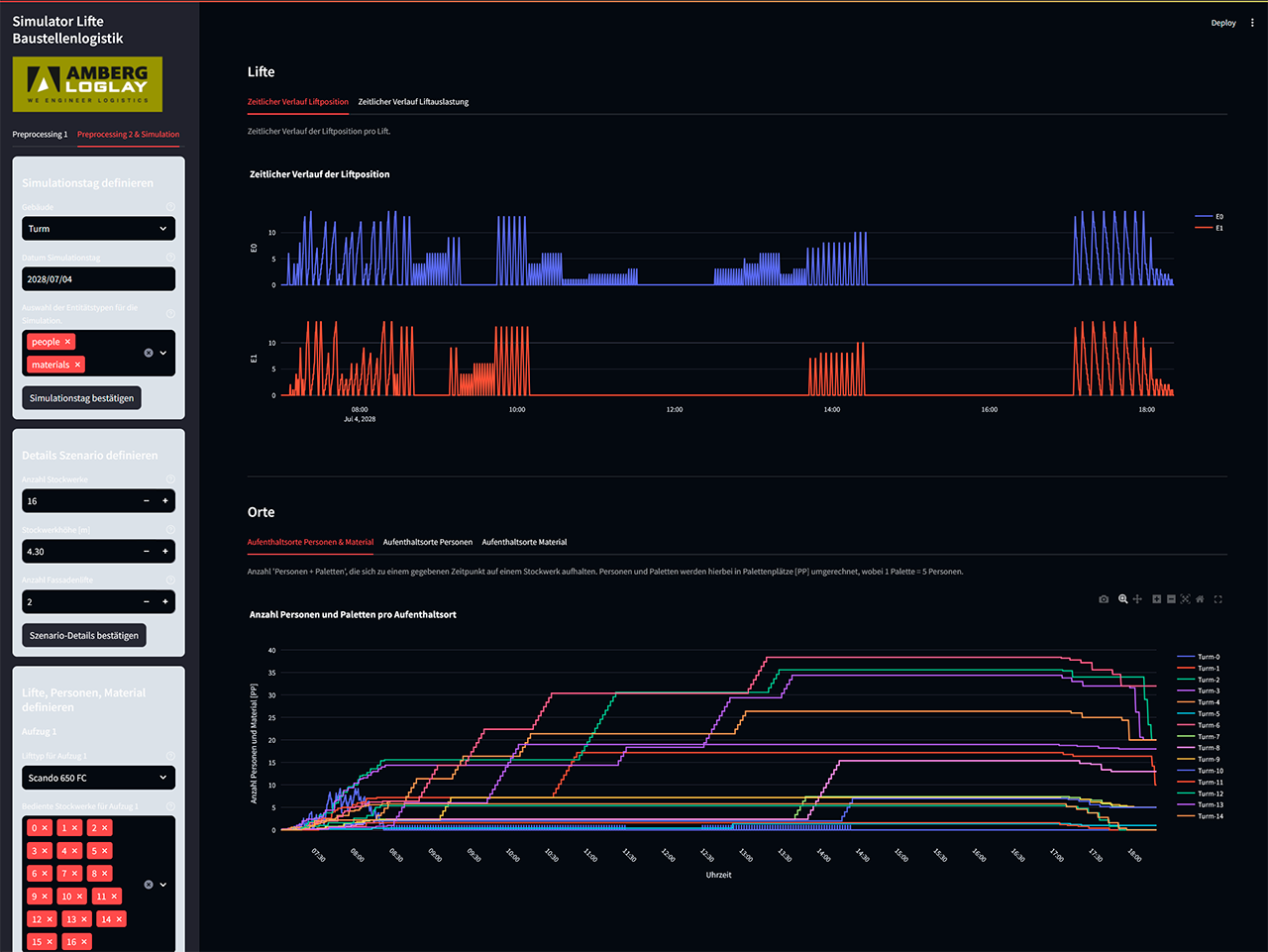Baden Cantonal Hospital: When emergency room and construction site share the same entrance
Switzerland
/
Im Ergel, Baden
2018–2024
|
KSB Kantonsspital Baden AG
Architect:
Nickl + Partner Architects
|
Budget:
CHF 545 million
For the new KSB ‘Agnes’ building, deliveries to the construction site and traffic to the emergency department passed through a bottleneck. The linking of the BIM model with the schedules coordinated a smooth coexistence - and ensured precise coordination of the transport processes with the hospital and operational traffic.
emphases
BIM2LOG
Space management
Process-controlled construction logistics
Coordination of construction logistics with operational logistics
The project
Building a highly modernized hospital is always a complicated operation. This was also the case with the new “Agnes” building at the Baden Cantonal Hospital: Not only was the latest medical technology installed on a total of eight floors and an additional patient capacity of 400 beds created, but a complex and unique architecture was also created with the “Healing Architecture”. In the future, eleven patios will provide plenty of daylight and processed wooden elements will improve patient well-being.

challenges
Flexible, sustainable, patient and employee friendly, and well-connected: The requirements for a new hospital building are high. On the one hand, it is important to keep track of the planning. In the case of the new KSB building, the building application, which was submitted in November 2017, comprised a total of 30 A4 folders with 800 square meters of plans. On the other hand, although the actual usable area of 76,215 square meters and the building volume of 351,030 cubic meters provide enough space for construction measures, access to the construction site was not allowed to affect ongoing hospital operations. This interface between planning and infrastructure led to the project's major planning snag: In addition to ensuring the flow of materials and personnel on the construction site, accessibility to the emergency room also had to be ensured.
solution
In digital construction logistics (BIM2LOG), 3D models and schedules are analyzed. The focus is on aspects such as data density and complexity, documentation and availability, maturity and quality of data, as well as the level of networking and nomenclatures. From this analysis, schedules are linked to the models, followed by the coordination of resources to the specified dates. This procedure ensures an integrated use of the BIM models for execution.
In the case of KSB's new “Agnes” building, the building was functionally divided into eight cells using a so-called cell structure, which differ in their functionality, equipment and standard of construction. Scheduling and construction management were organized analogously to this cell structure. Even before construction began, all necessary information on the size and distribution of the warehouse space and the equipment was generated on the basis of this quantity analysis, such as whether sufficient vertical conveyors — such as construction cranes — were available. A logistics service provider coordinated every delivery centrally after it was registered for delivery by the entrepreneur on the CLM logistics software. By linking the quantities (volumes) from the BIM model, depending on the trade, with the schedule, it was possible to create an area plan for the construction site.

“It pays to have a clear strategy. In the case of KSB, the idea and the logistics tool were carefully implemented before interior construction and the companies were trained accordingly. If things are well organized, this has a positive effect on the overall dynamics on a construction site. When companies receive the material reliably and can work quickly, there is a better atmosphere and cooperation among companies.”
scores
Thanks to digital construction logistics, we have succeeded in increasing the efficiency of assembly and implementing a high level of prefabrication despite tight spaces. Data-based analyses made it possible to optimize delivery processes. Thanks to digital monitoring, short interim storage on defined areas and the allocation of individual areas of limited size according to availability were possible. The delivery of transport units directly to the installation site (Just-in-time delivery) brought an overview and order to the construction site. Thanks to an overall plan that included all work, effective and fast execution in accordance with the execution schedule was possible.
Read more about the New construction project for the Baden Cantonal Hospital.








